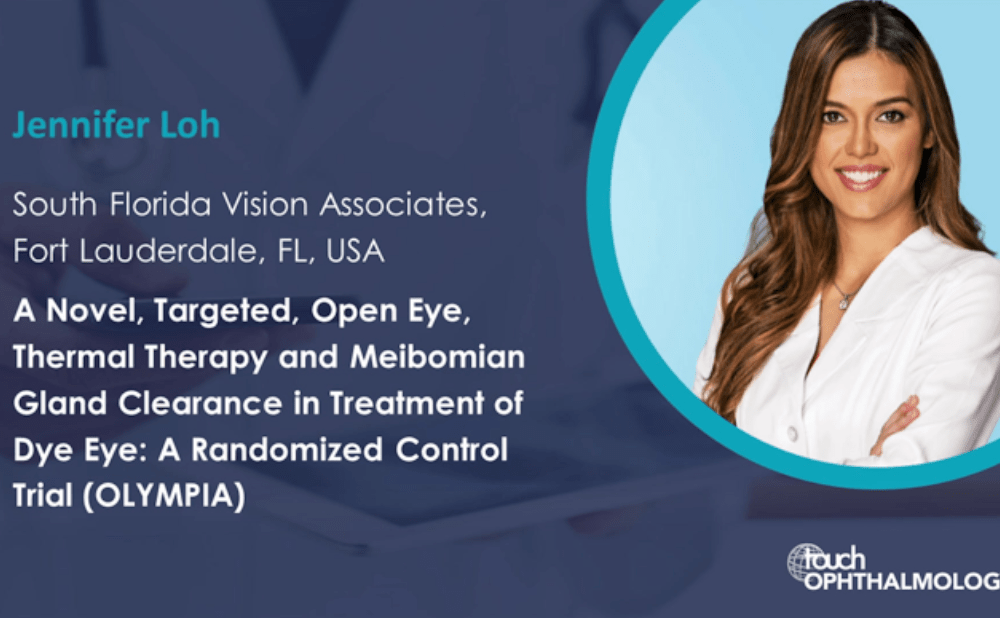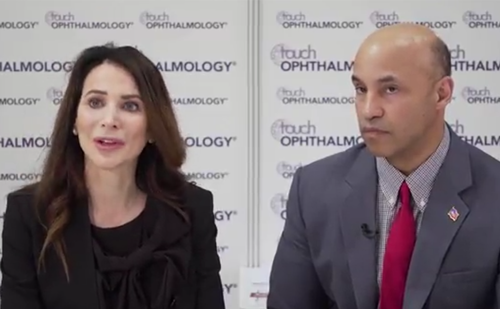Authored by: Vanessa Lane, PhD, Senior Medical Writer, Touch Medical Media, UK
Dry eye disease (DED) is a multifactorial inflammatory autoimmune disease of the tear film and ocular surface, whereby tear film instability and ocular surface inflammation give rise to symptoms of discomfort, visual disturbance, eye dryness, irritation, foreign body sensation, light sensitivity and itching.1,2
In severe DED, optimising treatment can be challenging, as specific molecular disturbances are not evident from clinical examination alone.3 In addition, the assessment of treatment outcomes is not straightforward because of the lack of agreement between clinical signs and symptoms. There is, therefore, a need for more objective methods of selecting treatment for DED and monitoring the effects of treatment.
The stability of the tear film is considered an indication of ocular health.4 The tear film consists of mucin, aqueous and lipid layers, with the former two being considered one layer of mucoaqueous gel.4 The measurement of tear film breakup time (TBUT) has been found to be a good indicator of the ability of the tear film to prevent evaporative loss.4 However, this procedure is not straightforward because of its inherent variability in outcomes and associated discomfort.4 As the tear film lipid layer is believed to control evaporation, it was expected that patterns of breakup could correspond with lipid layer thickness and thinning rate.4 However, this has not been found, indicating that the lipid layer is a poor barrier to evaporation, perhaps because of a deficiency in composition and/or structure.5
Ocular surface thermography has recently been adopted for the clinical assessment and diagnosis of DED.6,7This non-contact approach to observing tear film breakup reduces the chance of reflex tearing by avoiding fluorescein sodium drops.8 A dual thermal-fluorescent imaging system to assess both lipids and temperature simultaneously without the discomfort and inconvenience of the traditional TBUT test has also been developed.8
In DED, dysregulation of immune mechanisms leads to a cycle of continued inflammation, accompanied by alterations in both innate and adaptive immune responses.9 This suggests that inflammatory biomarkers could be used to monitor the ocular surface, classify the severity of disease and objectively measure outcomes of treatment.9
Class II major histocompatibility complex human leukocyte antigen-D related (HLA-DR)-positive cells have been proposed as a minimally invasive, objective ocular surface inflammatory biomarker of DED.10 HLA-DR is believed to play an important role in T-cell activation and is overexpressed in many patients with DED.11 Its potential as a viable biomarker has been investigated with impression cytology, which permits the retrieval of the outermost layer of ocular surface cells via the use of various types of filters.12 Results have shown that HLA-DR correlates significantly with corneal fluorescein staining and to a lower extent Schirmer’s test, but weakly with TBUT and symptom reporting questionnaires.13
A wide range of proteins, mucins, neuromediators, cytokines/chemokines, lipids and metabolites have now been identified as putative biomarkers in tears for DED, which may allude to crucial pathways in disease progression and ultimately allow for more predictive and personalised therapy of patients with DED in the future.14
DED can also be a severe and significant problem in patients with ocular graft-versus-host disease (oGVHD), resulting in tear deficiency and a damaged ocular surface.15 Differences in some tear cytokine levels, including interleukin (IL)-2, IL-6, IL-10, IL-17α, interferon (IFN)-γ and tumour necrosis factor (TNF)-α, have been observed in chronic GVHD (cGVHD) patients,16 suggesting that tear cytokines could be useful biomarkers for the diagnosis of DED. A significantly decrease in levels of epidermal growth factor receptor (EGFR) and interferon inducible protein (IP)-10/chemokine ligand 10 (CXCL10) levels have also been shown in oGVHD versus healthy subjects, positively correlating with tear production and stability and negatively correlating with symptoms, hyperaemia and vital staining.17 In an analysis of 84 inflammatory genes in conjunctival cells of oGVHD patients, EGFR, IL-6, IL-9 and nicotinamide phosphoribosyltransferase (NAMPT) were found to have the greatest potential as diagnostic biomarkers.18
Research into the relationship between a range of biomarkers and DED is ongoing, and has the potential to provide novel therapeutic targets that could be inhibited by specific drugs, thus enabling control of the processes involved in DED and improving patient quality of life.18
References
1. Craig JP, Nichols KK, Akpek EK, et al. TFOS DEWS II definition and classification report. Ocular Surface. 2017;15:276–83.
2. Belmonte C, Nichols JJ, Cox SM, et al. TFOS DEWS II pain and sensation report. Ocular Surface. 2017;15:404–37.
3. D’Souza S, Tong L. Practical issues concerning tear protein assays in dry eye. Eye Vision. 2014,1:6.
4. Willcox MDP, Argüeso P, Georgiev GA, et al. TFOS DEWS II tear film report. Ocular Surface. 2017;15:366–403.
5. King-Smith PE, Reuter KS, Braun RJ, et al. Tear film breakup and structure studied by simultaneous video recording of fluorescence and tear film lipid layer images. Invest Ophthalmol Vis Sci. 2013;54:4900–9.
6. Tan LL, Sanjay S, Morgan PB. Static and dynamic measurement of ocular surface temperature in dry eyes. J Ophthalmol. 2016;2016:7285132.
7. Purslow C, Wolffsohn J. The relation between physical properties of the anterior eye and ocular surface temperature. Optom Vis Sci. 2007;84:197–201.
8. Su TY, Chang SW, Yang CJ, Chiang HK. Direct observation and validation of fluorescein tear film break-up patterns by using a dual thermal-fluorescent imaging system. Biomed Opt Express. 2014;5:2614–9.
9. Wei Y, Asbell PA. The core mechanism of dry eye disease (DED) is inflammation. Eye Contact Lens. 2014;40:248–56.
10. Epstein SP, Gadaria-Rathod N, Wei Y, et al. HLA-DR expression as a biomarker of inflammation for multicenter clinical trials of ocular surface disease. Exp Eye Res. 2013;111:95–104.
11. Tsubota K, Fujihara T, Saito K, Takeuchi T. Conjunctival epithelium expression of HLA-DR in dry eye patients. Ophthalmologica. 1999;213:16–9.
12. Hagan S. Biomarkers of ocular surface disease using impression cytology. Biomark Med. 2017;11:1135–47.
13. Brignole-Baudouin F, Riancho L, Ismail D. Correlation between the inflammatory marker HLA-DR and signs and symptoms in moderate to severe dry eye disease. Invest Ophthalmol Vis Sci. 2017;58:2438–48.
14. Hagan S, Martin E, Enríquez-de-Salamanca A. Tear fluid biomarkers in ocular and systemic disease: potential use for predictive, preventive and personalised medicine. EPMA J. 2016;7:15.
15. Ogawa Y, Kim SK, Dana R, et al. International chronic ocular graft-vs-host-disease (GVHD) Consensus group: Proposed diagnostic criteria for chronic GVHD (Part I). Sci Rep. 2013;3:3419.
16. Jung JW, Han SJ, Song MK, et al. Tear cytokines as biomarkers for chronic graft-versus-host disease. Biol Blood Marrow Transplant. 2015;21:2079–85.
17. Cocho L, Fernández I, Calonge M. Biomarkers in ocular chronic graft versus host disease: tear cytokine- and chemokine-based predictive model. Invest Ophthalmol Vis Sci. 2016;57:746–58.
18. Cocho L, Fernández I, Calonge M, et al. Gene expression-based predictive models of graft versus host disease-associated dry eye. Invest Ophthalmol Vis Sci. 2015;56:4570-81.











